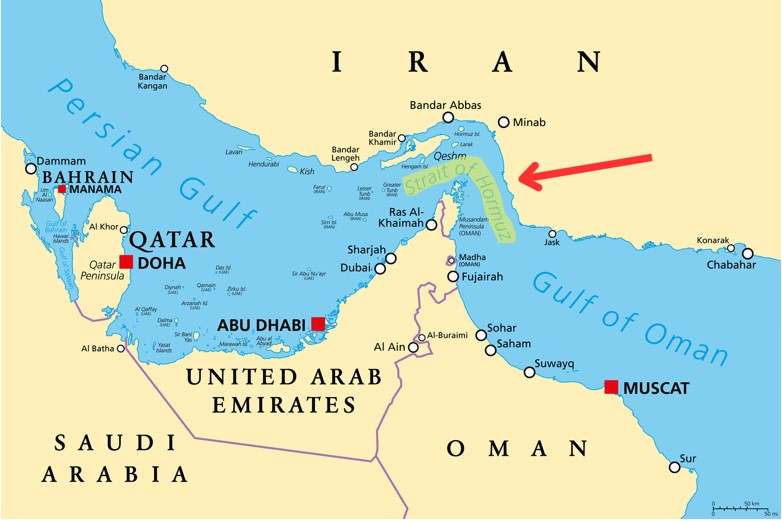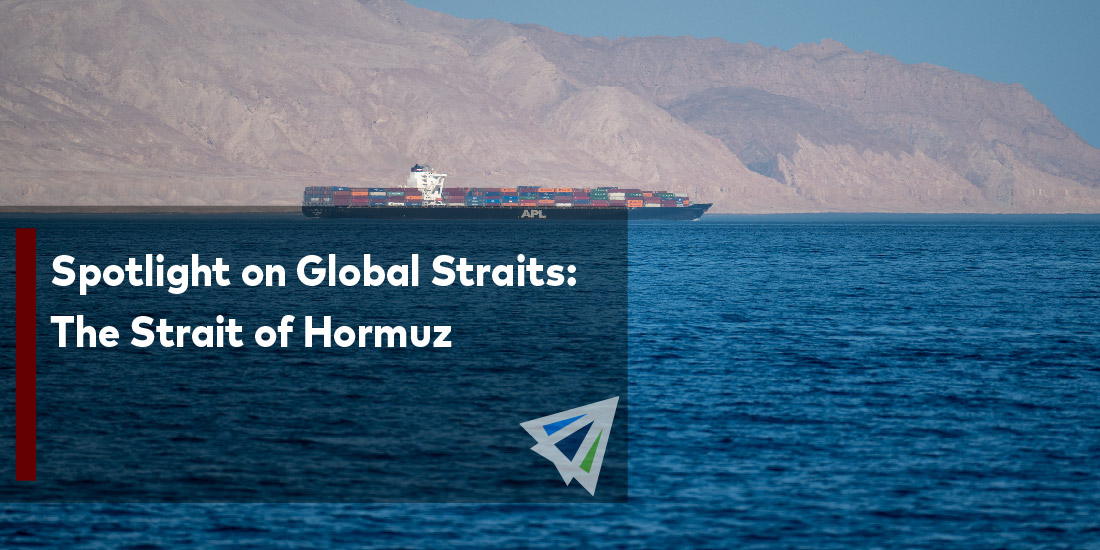The Strait of Hormuz is a strategically crucial waterway located between the Persian Gulf and the Gulf of Oman, connecting the Persian Gulf with the Arabian Sea and beyond. Here are several reasons why it holds immense importance: a critical oil passage, maritime trade, energy security, and regional geopolitics.

Geopolitical Significance and Security Concerns
The Strait of Hormuz holds significant geopolitical importance largely due to its strategic location. Here’s a few specific key points that really highlight the straits geopolitical significance.
Critical Maritime Chokepoint: The Strait of Hormuz is one of the most important maritime chokepoints globally, located between the Persian Gulf and the Gulf of Oman, as seen in the map above. It is the only sea passage from the Persian Gulf to the open ocean, making it crucial for the transit of oil and gas shipments.
The Strait accounts for almost 30% of world oil trade transiting through, with the majority destined for Asia.
Energy Security: As a major transit route for oil and natural gas, any disruption in the Strait of Hormuz can have significant implications for global energy markets. Disruptions could include blockades, conflicts, or geopolitical tensions affecting shipping lanes, leading to potential spikes in energy prices and affecting global economies.
According to the U.S. EIA, between 2020 and 2022, the volumes of crude oil, condensate and petroleum products passing through the Strait of Hormuz increased by 2.4 million barrels per day. This was driven by the recovery in oil demand that followed the economic downtown from the COVID-19 pandemic.
Maritime Trade: Maritime trade through the Strait is quite important for global energy security and international trade.
Beyond oil, the strait is also vital for maritime trade in general. It serves as a crucial transit route for goods moving between Asia, Europe, and Africa, facilitating international trade and economic activities.
Geopolitical Tensions: The strait is bordered by Iran to the north and Oman and the United Arab Emirates to the south.
In recent times, this Strait has not experienced complete closure, but periodically Iran has threatened to close or restrict passage through the Strait in response to various geopolitical tensions and international sanctions. Of note, the last time the Strait was partially closed or restricted was during the Iran-Iraq War in the 1980s.
Looking Ahead
To wrap things up, the Strait of Hormuz remains a crucial maritime chokepoint due to its strategic location. It also plays a pivotal role in global energy security and serving as a vital transit route for international maritime trade. Geopolitical tensions in the region, centered on treats to restrict or potential close the strait, underscore its significant impact on global economies and energy markets.
Should you have any questions regarding this, please reach out to our team today.
Additionally, we have our weekly market updates that can provide you with relevant freight news, updates, developments across the industry, and more.
